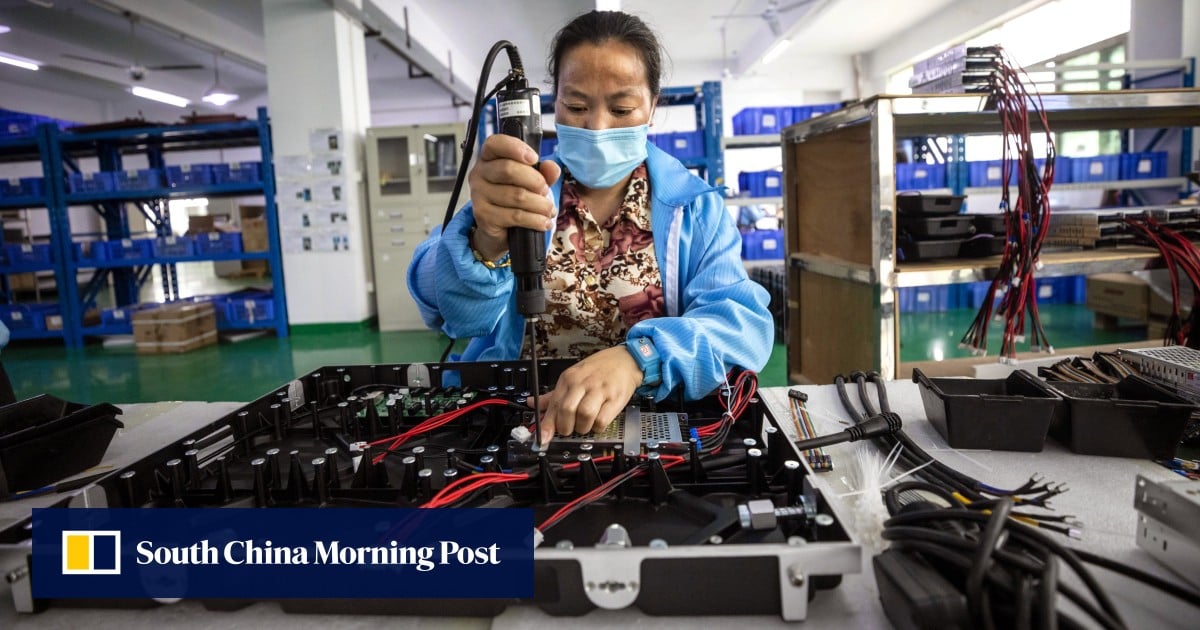Shopping
Shenzhen rides e-commerce wave as globally popular apps fuel cross-border trade

But for now, e-commerce businesses are cashing in on overseas demand. In the first quarter, the value of such trade in Shenzhen exceeded 110 billion yuan, a year-on-year increase of 95 per cent. That total represented half of Guangdong province’s, and about one-fifth of the nation’s, for the period, according to a report last month by state broadcaster CCTV.
The massive increase in such sales continued a trend from 2023, when Shenzhen’s cross-border e-commerce reached 326.53 billion yuan for the whole year – up 74.4 per cent over 2022.
“Shenzhen has seized opportunities in the updated global industrial division of labour, and it has aligned its industrial structure more closely with the demands of the world market,” said Peng Peng, executive chairman of the Guangdong Society of Reform.
Shenzhen is home to more than 150,000 cross-border e-commerce exporters, accounting for nearly half of Chinese sellers on platforms such as AliExpress, Lazada, and eBay, and one-third of Amazon’s Chinese sellers, according to Shenzhen authorities.
In recent days, China’s Ministry of Commerce and eight other government departments called for the expansion of cross-border e-commerce exports and suggested that more overseas warehouses be constructed to support the sector, with increased financial aid and improved logistics, in a bid to “help cross-border e-commerce-related enterprises ‘go global’”.
Shenzhen, which borders Hong Kong, is seen as a symbol of China’s reform and opening up and is home to hi-tech firms such as BYD, Huawei Technologies, Tencent and DJI, earning it the nickname “China’s Silicon Valley” for its rapid advancements in areas such as artificial intelligence and new-energy vehicles.
In addition to exporting many electric cars, drones, computers and smartphones, Shenzhen also hosts numerous labour-intensive industries, including textiles, garments, furniture and various small goods, which are major e-commerce products in cross-border trade.
According to Peng, Shenzhen’s robust development in both the traditional garment industry and the emerging internet industry, along with its numerous small and medium-sized firms and strategic geographic location in the Pearl River Delta – being near the international trade hub of Guangzhou and international financial centre of Hong Kong – has significantly helped Shenzhen’s cross-border e-commerce sector.
The [cross-border e-commerce] sector is likely to face trade frictions, too
Government figures show that 60 per cent of Shenzhen’s foreign trade comes from private firms, while half of Shanghai’s imports and exports come from foreign-invested companies and only one-third from private ones, which Peng said makes Shanghai more vulnerable to geopolitical tensions.
“But the sector is likely to face trade frictions, too,” Peng said, adding that “the government should enhance the sector’s cooperation with industries and investment in overseas markets to de-risk”.
The Shenzhen government is catering to this new growth – it has opened 59 all-cargo routes at airports, including nine dedicated cross-border e-commerce routes. Additionally, it has implemented a special audit model for cross-border e-commerce, allowing more than 90 per cent of parcels to be automatically released by customs.
Meanwhile, multinational e-commerce platforms such as Southeast Asia’s Shopee, America’s Newegg, Russia’s Ozon, and Africa’s Jumia have also set up operational headquarters and R&D centres in Shenzhen.
The Shenzhen government has announced that Amazon, the leading international e-commerce platform, has established its first global innovation centre in the city’s Qianhai New District. Additionally, Mercado Libre, the largest e-commerce platform in Latin America, is planning to establish its China headquarters in Shenzhen.







